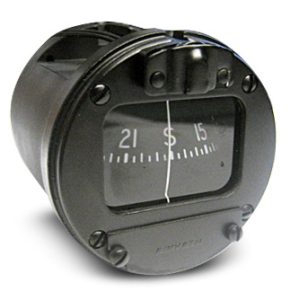
When thinking of navigation tools commonly found in airplanes, a compass probably isn’t at the top of your list. After all, most airplanes are equipped with more advanced electronic navigation tools, such as heading indicators, Inertial Navigation System (INS) and Global Positioning System (GPS). Even with these electronic navigation tools, though, many airplanes still feature a magnetic compass.
What Is a Compass?
A compass is a magnetic device that reveals the cardinal directions. Also known as the cardinal points, the cardinal directions consist of north, east, west and south. By identifying these directions, pilots and other individuals can plan their routes accordingly.
Most compasses rely on a magnet to reveal the cardinal directions. Thanks to its molten iron core, the Earth has a magnetic field. This powerful magnetic field is known as the magnetosphere. A typical compass has a magnetic needle that rotates until it points north. Once aligned with the magnetic north, the compass will then reveal the three other cardinal directions: east, west and south.
Why Airplanes Still Feature a Compass
Considering their low-tech method of operation, you may assume that compasses are obsolete and no longer used in the aviation industry. However, this couldn’t be further from the truth. Regardless of size or type, all airplanes have at least one compass; it’s a requirement set by the U.S. Federal Aviation Administration (FAA).
Most airplanes, of course, are already equipped with a heading indicator. Heading indicators are designed the show the direction in which an airplane is flying. So, why do airplanes still feature a compass if they already have a heading indicator?
Heading indicators are gyroscopic instruments, and like all gyroscopic instruments, they are susceptible to balancing errors. If the gyro isn’t perfectly balanced, the heading indicator will reveal an inaccurate direction. The heading indicator will essentially “drift,” revealing a direction that’s slightly off from the true direction.
Magnetic compasses don’t experience these errors. They work by using a magnetic needle to reveal the cardinal directions, whereas heading indicators work via a gyro. Therefore, compasses won’t drift or otherwise experience a loss of accuracy. Pilots, in fact, will often reset heading indicators using the airplane’s built-in compass.
Another reason airplanes still feature a compass is because they are completely independent and self-contained. Compasses don’t require power or data from any external source. This means a compass will always work — even if there’s a problem with the airplane’s other instruments.



